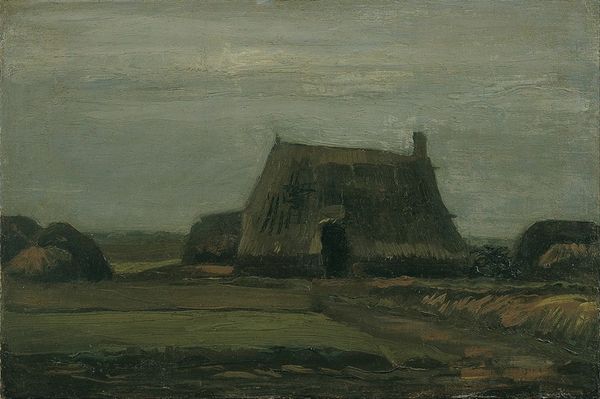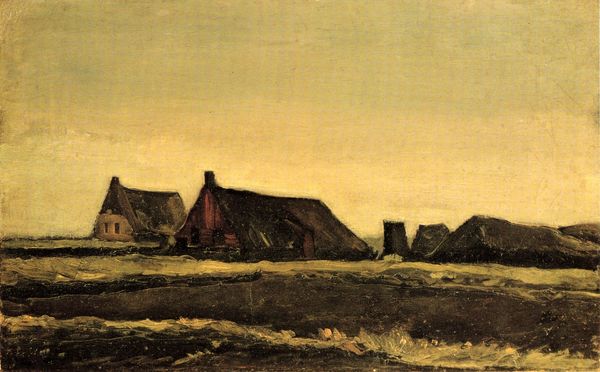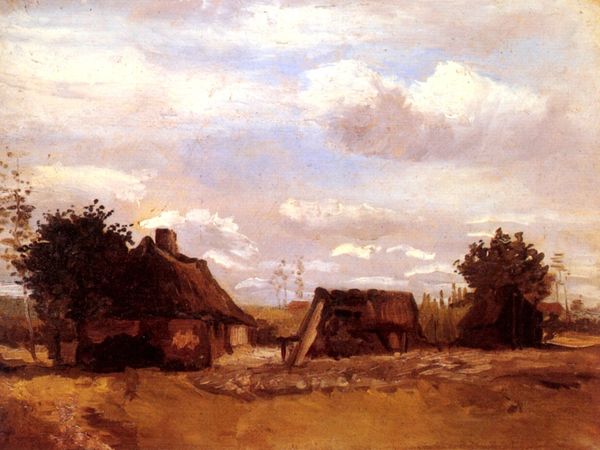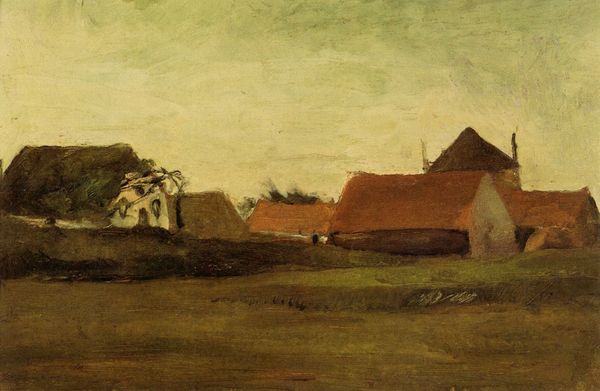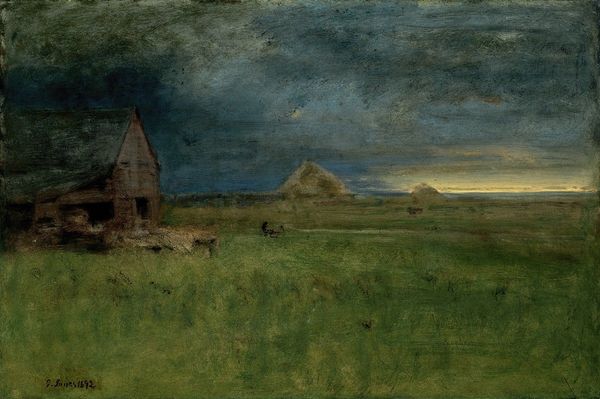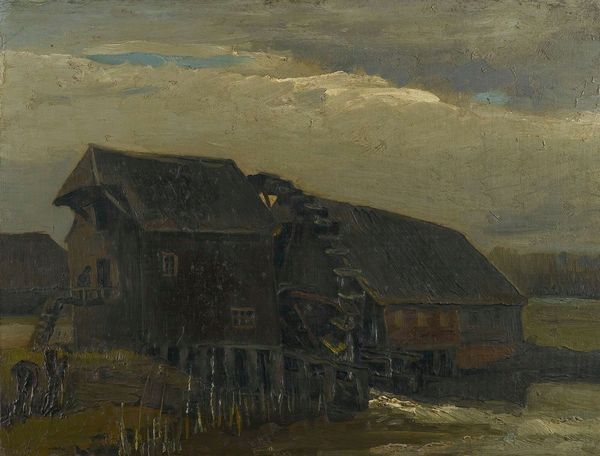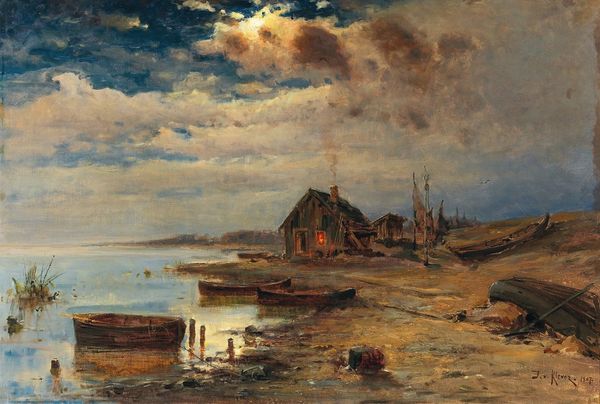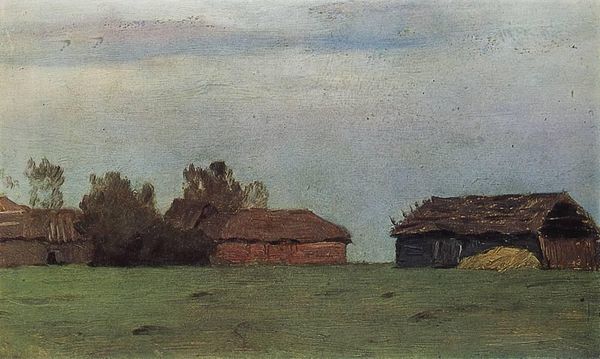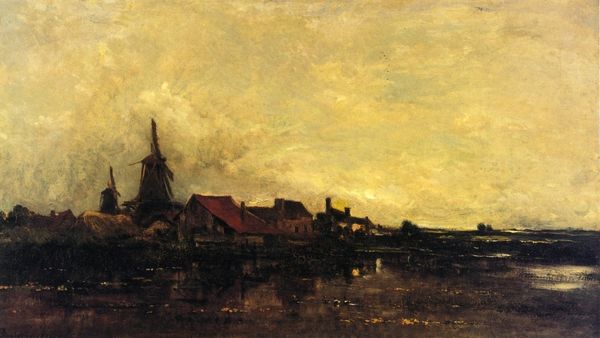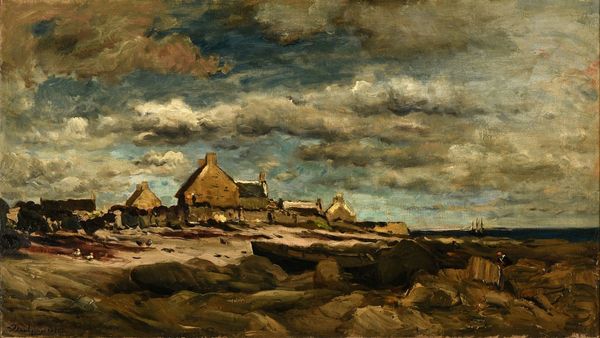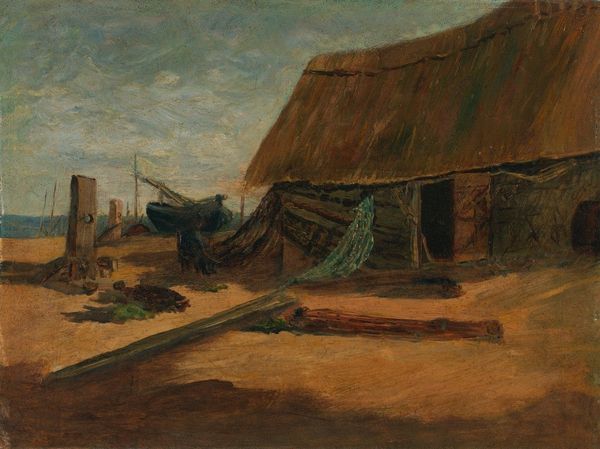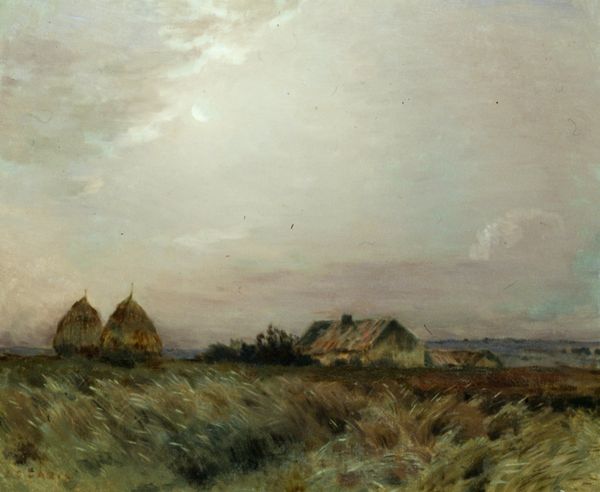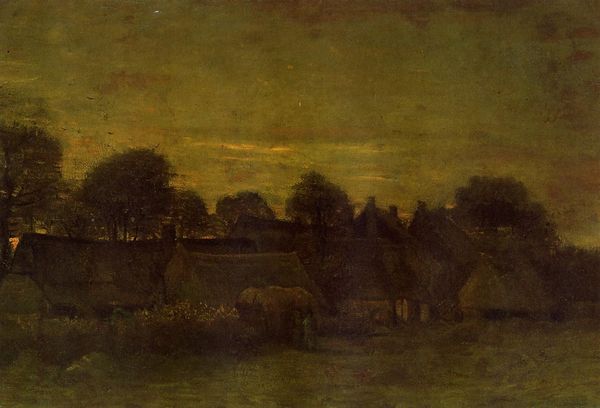
architecture
#
abstract expressionism
#
sky
#
abstract painting
#
charcoal drawing
#
impressionist landscape
#
possibly oil pastel
#
oil painting
#
acrylic on canvas
#
underpainting
#
arch
#
painting painterly
#
watercolor
#
architecture
Copyright: Public domain
Curator: Looking at Van Gogh’s "Farmhouse with Peat Stacks" from 1883, you can feel the weight of the land itself, right? Editor: Absolutely. My immediate reaction is to the materiality – that ochre and umber, heavy and grounded. It’s not just paint; it’s like he's slathering on the very earth of the scene. Curator: That earth is Drenthe, in the Netherlands. Consider this work in light of the social struggles of the peasantry; his intention was to capture something authentic. Editor: Right. It's a working-class landscape. How the thatched roof is practically caving in and you have what look like peat stacks on either side. This is the raw material sustaining the structure, both as fuel and visually. Curator: Van Gogh wanted to depict their arduous lives, their connection to the land, the labor that went into building that farmhouse, and those stacks. He wanted to do so without idealizing the lifestyle. It shows an undercurrent of class disparity. Editor: Exactly, this raw application speaks to the lack of polish, almost a crude honesty. You can practically feel the cold and damp clinging to those thatch roofs. Did he spend much time observing these specific buildings, documenting them? Curator: He did. In Drenthe he spent much of his time amongst peasants, even living among them, determined to capture a raw reality often omitted from prevailing societal narratives. He felt kinship to this work and their toils, mirroring, to an extent, his own internal conflicts. Editor: And it comes through viscerally. This feels less like artifice and more like testimony, evidence of a certain way of living and its cost, its production and what the building materials offer those who work the land. Curator: Precisely. So while on the surface we're looking at a landscape, we are actually given visual entry into a larger meditation on the circumstances of life in the margins of 19th-century Holland. Editor: I came seeking pigment and I find a narrative deeply embedded within its textured surfaces, which truly speaks to the impact materials have when considering our socio-economic reality. Curator: Indeed. Van Gogh manages to weave a stark yet poignant socio-political statement within what seems like a rudimentary landscape, echoing to contemporary discussions of equality and representation.
Comments
No comments
Be the first to comment and join the conversation on the ultimate creative platform.
